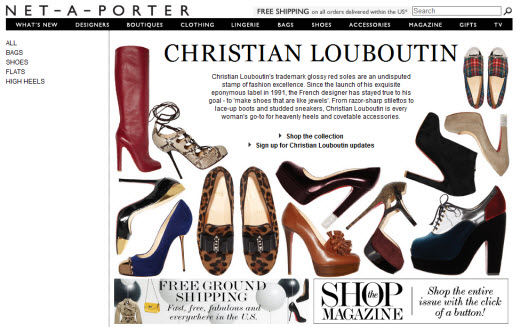A Tale Of Two Shoppers: Luxury Sales Bounce Back With Markups, Wal-Mart Struggles With Price Perception
MasterCard released their SpendingPulse macroeconomic report for July 2011, and the findings are a mixed bag for retailers. Luxury good sales are up 11.6% year over year, and e-commerce sales grew for the 24th straight month in every category except electronics. Combine that with the fact that many luxury brands have finally stopped fearing e-commerce, and it’s blue skies and sunshine for luxury good makers. Saks, who had to shutter some stores not so long ago, reports that same-store (stores open at least one year) revenue is up 15.6%, handily beating estimates of an 8.5% increase.
Then there’s Wal-Mart, whose same store traffic is down 2.6% year over year. Though they’ve attempted to up their style credibility, shoppers aren’t buying it and competitors like Target and traditional supermarkets are seeing foot traffic increase.
So what gives? Is the economy that far back on track that everyone’s trading up? Not exactly.
Surveys from Morgan Stanley and WSL Strategic retail found that shoppers actually don’t think Wal-Mart has the lowest prices anymore. Add to that, many are shopping less because they have less money to spend in the first place. {Bloomberg}
On the other side of the spending coin, luxury brands have been bumping up their prices on everything from 4-figure face creams to designer shoes and consumers are opening their wallets. Not at pre-recession levels, mind you, but enough to push sales up significantly for everyone from BMW and Mercedes Benz to Tiffany’s, LVMH and PPR (owner of Gucci and Yves Saint Laurent, whose luxury division recorded 23% sales growth). {NY Times}
Which makes it seem like the US retail sector is becoming a tale of two shoppers. In some ways, we hope that is the case, but aren’t sure that it is.
The recession happened for many reasons, but a significant one was consumers living beyond their means, spending money that they didn’t really have. Â While we’d like to believe that all of the luxury sales are dormant affluent consumers reawakening their credit cards after gaining from the overall gains the stock market has made since it hit is recent lows, the reality is that “aspirational shoppers” have long sustained the mass luxury industry.
If those shoppers have been saving and are financially stable, we don’t see a problem with spending $1000 on one item rather than 10 or 20 less expensive items.
While there may be some careful saving and selection behind the jump in luxury sales though, another percentage stood out to us: 33. That’s how much MasterCard’s profit rose year over year. There are undoubtedly some affluent individuals driving the $608 billion in MasterCard/MaestroCard spending, but we’d be remiss to overlook the fact that we’re still largely talking about the spending of borrowed money.
We’re glad to see sales in any industry bounce back, but we’ll wait for more information on who’s leading the shopping recovery before getting too hopeful that it’s truly a sign of the economy getting back on the ball.

